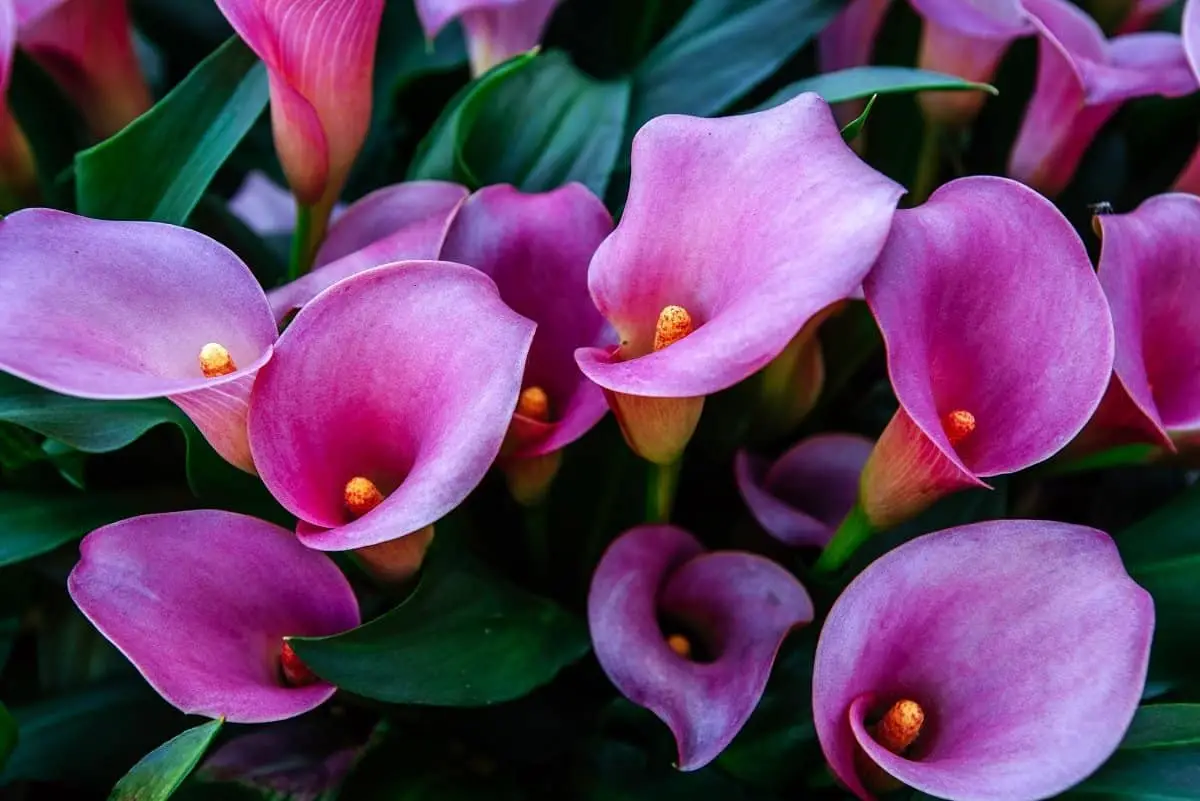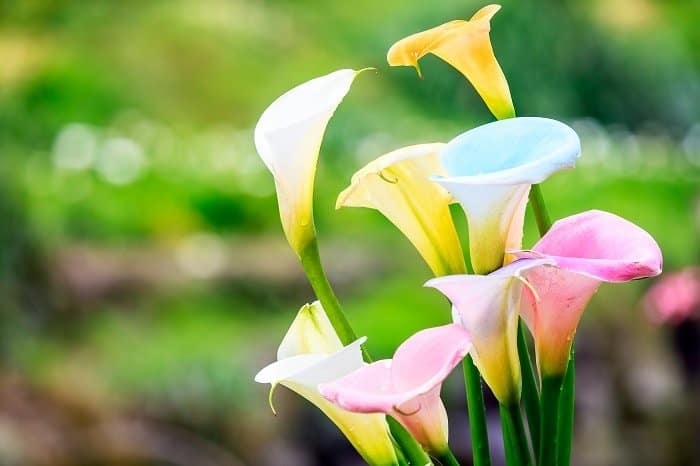Last Updated on March 10, 2022 by Griselda M.
Do you know if Calla Lilies are annuals or perennials? Annual plants grow for just one season and shrink off. On the other hand, Perennial plants keep on growing every season.
Sometimes you might be given calla lilies flowers as a gift. This might get you thinking of what next to do with them. You might be wondering if it is possible to keep your calla lilies every year or for just one season. Read on and we will help you discover this.
Annuals or Perennials Calla Lilies
A lot of times, most people treat their calla lilies plant as annuals. After buying potted calla lilies flowers or when they get them as a gift, they tend to discard them after a season. Thinking they are annual and because their blooms are done.
In actual sense, calla lilies are perennials. This means that you can watch your calla lilies grow and bloom again the next year. This mainly depends on how you handle your plant.
Factors That May Affect Your Calla Lilies Being Annual or Perennial
There are some factors (such as climatic factors) to consider if you want your calla lilies to last long and bloom every year.
- Temperature: climatic factors such as temperature can help or hinder your plant. Calla lilies do well when you expose them to moderate temperatures. But extremely high temperatures can harm the rhizome of your flower.
- Winter: you will need to keep your calla lilies indoors during winter. Extreme cold can destroy the rhizome of your flower and you won’t see them come back the next year.
Learn more about How To Care For Orchids After Blooming.
How to Maintain Your Calla Lilies
How you handle your calla lilies matters a lot as it will determine if your flower will be annual or perennial. Below are some ways to maintain your plant:
- Potted flower: Keeping your calla lilies potted is a good solution. This way you get and grow your potted calla lilies as perennial either indoors or outdoors. Outdoors calla lilies are more susceptible to drought. This is why you should always observe the moisture of your plant daily.
The indoor potted plant can most likely be watered every 2- 3 days.
- Moist soil: To enhance perennial growth, always maintain an evenly moist soil so the top of your flower does not dry out completely.
- Sunlight: Your calla lilies will need an all-day moderate sun supply or a little afternoon shade. This will help your calla lilies yield healthy leaves with good growth.
- Garden Calla lilies: You can put your calla lilies outside your garden during spring and summertime. Then during the first frost fall or winter, you take your plant back inside.
Annual Calla Lilies
You may decide you want your calla lilies to be annual. Therefore, you can simply treat them as annual.
Also, there are a few calla lilies varieties that may not survive in harsh conditions. Assuming you are concerned about the climate condition in your zone. Then you can treat your calla lilies as annual and simply replace them every year.
FAQs
Will calla lilies survive winter?
Calla lilies are one of those plants that can survive winter; they grow in cold climates and bloom in the cold season. Historically, most calla lilies have survived the winter, but some have hibernated or died due to frost.
Is a calla lily an indoor or outdoor plant?
Calla lilies are an easy plant to take care of indoors or outdoors.
The calla lily is a member of the Liliaceae family, which includes both indoor and outdoor plants. While most species live in tropical and temperate regions, some can be found in North America and Europe.
How do you keep calla lilies blooming?
One of the easiest ways to keep calla lilies blooming is by providing them with high humidity levels. The flowers require a moist environment for optimum growth.
Do calla lilies grow well in pots?
Calla lilies can thrive in a variety of types of pots, especially if they have drainage holes. The calla lilies will also need regular water to stay hydrated and healthy.
Should calla lilies be cut back?
The caller lily is a very popular flower during the summer time. They come in many different forms, sizes, and colors. However, many people are unsure whether or not to cut them back after they have bloomed.
The answer to this question is yes because calla lilies require cutting back to promote new shoots and maintain their shape. The flower stalks should be cut back after they bloom, ideally before the end of July, and the plant could then be trimmed down at the base. Some people even recommend that you trim it right before it blooms.
What do you do with calla lilies after they bloom?
A great idea is to keep the foliage of the calla lilies as a garden plant. They will look pretty on their own without being confined to a vase.
We can also take a sharp knife and carefully cut the flowers off the stem, leaving about an inch of stem attached to the root. Then we can remove any leaves from around the base of the flower and place it in water.
It's important to remember that calla lilies are not evergreen flowers, so after they've bloomed, you must cut them back.
Where is the best place to plant calla lilies?
Calla lilies are a popular flower choice for gardens and can persist through cold winter months. However, before planting it, we should be aware of the following:
1) They grow best in shade and do not like direct sunlight.
2) They need to be planted in a well-drained area away from any water sources because they do not tolerate wet soil.
3) They need rich, moist soil to grow well and should be fertilized once or twice a year with compost or manure.
Will calla lilies spread?
Will calla lilies grow on their own without being planted? They are known to grow in soil or water. If they are planted in the ground, they will produce a bulb underground which will then produce another plant. After some time, these plants will start to reproduce on their own. This is not always something that happens with calla lilies though because they need specific conditions in order to reproduce.

Eunice is a gardener who loves to play in the dirt. She starts her day early in the morning, watering her plants and tending to her garden. She loves the smell of freshly cut grass and the feeling of sunshine on her back as she works. She‘s a master at creating beautiful flower arrangements and can often be found humming a tune as she tends to her plants. When she‘s not gardening, she loves to read books about nature and share her knowledge with others. Eunice loves gardening so much that she‘s even been known to talk to her plants!



